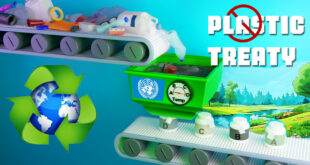The six-month waiver on sanctions granted by the U.S. to India and seven other countries importing oil from Iran highlights the importance of economic factors in the India-U.S. strategic partnership. The exemption also puts the spotlight on the link between economics and strategy. No special treatment The waiver gives India a breathing space of sorts and will help maintain India-U.S. ties on an even keel. But the U.S. has not given any special treatment to India. China, India’s main Asian competitor and perceived by the U.S. as its main security threat, has also been granted a waiver. President Donald Trump’s explanation is that he is going slow on sanctions with the intent of avoiding a shock rise in global oil prices. The waiver shows that Washington and New Delhi will cooperate on India’s oil and gas needs. Indeed, their Strategic Energy Partnership (April 2018) sees energy cooperation serving “as a centerpiece in the bilateral relationship”. This is because the U.S. believes that it is the world’s leading producer of oil and gas. The U.S. National Security Strategy of November 2017 highlighted the importance of “energy dominance — America’s central position in the global energy system as a leading producer, consumer, and innovator”. India should entertain no illusions about the Trump administration’s wish that it should open up as a key energy market for the U.S. Indeed, since Mr. Trump became President last January oil exports from the U.S. to India have risen. In 2017, India imported 8 million barrels of American crude. Until this July it had imported more than 15 million barrels of U.S. crude. But boasts about America’s energy dominance ignore the interdependent nature of today’s global energy market, and of relations between states. Unsurprisingly, India needs the help of both the U.S. and Iran. The U.S. is India’s main strategic partner. Indeed, American naval power is indispensable for preserving maritime freedom and security in the Indian Ocean and the South China Sea. Ties with Iran At the same time, friendly ties with a politically stable Iran undoubtedly suit India. But the strengthening of commercial and political ties with Iran has been an uphill climb. In 2009, the International Atomic Energy Agency demanded that Iran stop uranium enrichment. India made it clear that it did not support Iran’s nuclear weapons ambitions and voted against it. At another level, India has had a bilateral trade deficit with Iran over many years. In 2017 it was $8.5 billion. India’s offer to pay for oil in rupees is unattractive to Iran. Tehran does not want to buy enough Indian goods to make acceptance of rupee payment for its oil worthwhile. But the use of any currency other than the U.S. dollar would mean that a cash-strapped Iran must extend more credit to India. The two countries must find a way out of this conundrum.
Source : https://www.thehindu.com/todays-paper/tp-opinion/walking-the-tightrope/article25628025.ece
 Chinmaya IAS Academy – Current Affairs Chinmaya IAS Academy – Current Affairs
Chinmaya IAS Academy – Current Affairs Chinmaya IAS Academy – Current Affairs



